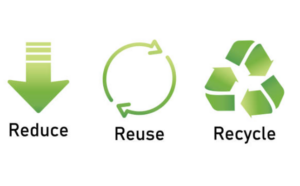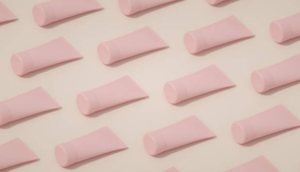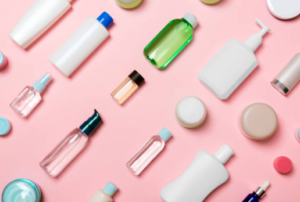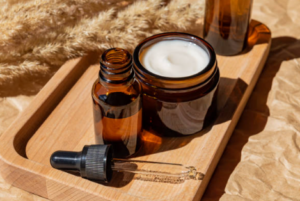Giving New Life to Old Resources

In the ever-evolving world of beauty, where innovation meets sustainability, a revolutionary trend has emerged—upcycled materials in skincare packaging. As the beauty industry undergoes a paradigm shift towards eco-conscious practices, brands are increasingly turning to upcycling as a means of reducing environmental impact. This blog explores the significance of upcycled materials in skincare packaging, shedding light on how this practice is not just a trend but a transformative movement towards a more sustainable and responsible beauty future.
The beauty industry, with its constant churn of new products and packaging, has long been associated with environmental concerns. The use of traditional packaging materials such as plastic, which often ends up in landfills or oceans, has contributed to pollution and resource depletion. In response to growing awareness about environmental issues, both brands and consumers are seeking alternatives that tread lightly on the planet.
Upcycling is a process that involves taking discarded materials or products and repurposing them to create something of higher quality or value. Unlike recycling, which breaks down materials to create new ones, upcycling retains the integrity of the original material, giving it a new lease on life. In the context of skincare packaging, upcycling involves using reclaimed materials to create innovative and sustainable packaging solutions.
The Environmental Impact of Conventional Skincare Packaging
Traditional skincare packaging, often composed of single-use plastics and non-biodegradable materials, contributes significantly to environmental degradation. The beauty industry’s reliance on these materials has led to concerns about pollution, resource depletion, and the long-lasting impact of packaging waste on ecosystems. As consumers become more environmentally conscious, there is a growing demand for sustainable alternatives that align with ethical and eco-friendly values.
Upcycled materials offer a promising solution to the environmental challenges posed by conventional skincare packaging. By repurposing materials that would otherwise end up as waste, brands can create packaging that is not only visually appealing but also environmentally responsible. From reclaimed ocean plastics to discarded glass and metal, the possibilities for upcycled skincare packaging are as diverse as the materials themselves.
- Reclaimed Plastics: One of the most significant contributors to ocean pollution is plastic waste. Upcycled skincare packaging often incorporates reclaimed plastics sourced from beaches, oceans, or landfills. Brands are working towards not only cleaning up these spaces but also repurposing the collected plastics into innovative and stylish packaging. This not only reduces the demand for new plastic production but also prevents existing plastic from harming marine life.
- Glass Revival: Glass is a versatile and endlessly recyclable material, but its production requires a considerable amount of energy. Upcycled skincare packaging may involve reclaiming and repurposing glass from discarded bottles or containers. This practice not only minimizes the energy footprint associated with glass production but also gives a second life to a material that would otherwise contribute to landfill waste.
- Metal Mastery: Metals, such as aluminum and steel, are widely used in skincare packaging due to their durability and recyclability. Upcycled metal packaging may involve repurposing scrap metal or discarded metal containers to create new, eye-catching designs. The process of upcycling metals requires less energy than producing new metal, making it a sustainable choice for beauty brands committed to reducing their environmental impact.
- Paper Perfection: Upcycled paper is another innovative avenue for skincare packaging. Brands may utilize reclaimed paper from various sources, such as post-consumer waste or discarded packaging materials, to create eco-friendly and biodegradable options. Upcycled paper packaging not only reduces the demand for new paper production but also minimizes the environmental impact associated with traditional paper processing.
Here is the benefits of upcycled skincare packaging:
- Environmental Conservation: The primary benefit of upcycled skincare packaging lies in its positive impact on the environment. By repurposing materials that would otherwise become waste, brands contribute to reducing pollution, conserving resources, and mitigating the ecological footprint of their products.
- Waste Reduction: Upcycled packaging directly addresses the issue of waste by diverting materials from landfills or oceans. This waste reduction not only benefits the environment but also aligns with the growing consumer demand for brands to take responsibility for their product life cycles.
- Innovation and Creativity: Upcycled skincare packaging allows for innovation and creativity in design. Brands can experiment with unique textures, colors, and shapes, creating packaging that not only reflects their commitment to sustainability but also stands out on shelves as a testament to their dedication to eco-friendly practices.
- Consumer Appeal: As consumers become more conscious of their environmental impact, upcycled skincare packaging holds significant appeal. Brands that embrace sustainable practices and communicate their commitment to the planet resonate with environmentally conscious consumers, building brand loyalty and trust.

How Consumers Can Support Upcycled Beauty
- Educate Yourself: Stay informed about brands that prioritize upcycled materials in their packaging. Look for information on their websites, product labels, or social media channels to understand their commitment to sustainability.
- Choose Wisely: Make conscious choices by supporting brands that embrace upcycled skincare packaging. When shopping for beauty products, consider the environmental impact of the packaging and opt for brands that align with your values.
- Advocate for Change: As a consumer, your voice holds power. Encourage brands to adopt upcycled packaging and sustainable practices by expressing your preferences and expectations. Social media platforms provide a valuable space to engage with brands and advocate for positive change.
- Participate in Recycling Programs: Many beauty brands, including those with upcycled packaging, actively participate in recycling programs and initiatives. Support these efforts by properly disposing of your beauty product containers through designated recycling channels. Many brands provide information on their websites or product packaging regarding how to recycle their specific packaging.
- Share Your Discoveries: Spread awareness about brands that champion upcycled skincare packaging. Share your discoveries with friends, family, and on social media platforms. Word-of-mouth recommendations and online discussions contribute to a wider awareness of sustainable beauty practices.

Challenges and Opportunities in Upcycled Skincare Packaging
While the adoption of upcycled skincare packaging is a positive step towards sustainability, it comes with its own set of challenges and opportunities.
- Quality Assurance: Maintaining consistent quality in upcycled materials can be challenging, as the characteristics of reclaimed materials may vary. Brands need to invest in rigorous testing and quality control measures to ensure that upcycled packaging meets the same standards as traditional packaging.
- Supply Chain Considerations: Sourcing and securing a steady supply of upcycled materials may pose challenges, particularly for brands with high production volumes. Developing robust partnerships with suppliers and investing in efficient supply chain management are crucial aspects of successful upcycled packaging initiatives.
- Consumer Education: Many consumers are still unfamiliar with the concept of upcycled packaging and its benefits. Brands have the opportunity to educate consumers about the positive environmental impact of choosing products with upcycled packaging, fostering a deeper understanding of the sustainability narrative.
- Design Innovation: Upcycled materials may present design challenges due to their unique characteristics. However, these challenges also provide an opportunity for brands to innovate in terms of packaging design, creating visually striking and eco-friendly solutions that set them apart in the market.
The incorporation of upcycled materials in skincare packaging is a pivotal step towards achieving a circular economy within the beauty industry. In a circular economy, resources are continually reused, and waste is minimized through recycling, upcycling, and sustainable practices. Brands embracing upcycled packaging contribute to the vision of a beauty industry that operates within the principles of circularity.

By adopting a circular economy approach, the beauty industry can move away from the linear model of “take, make, dispose” and transition towards a more regenerative and sustainable system. Upcycled skincare packaging represents a tangible manifestation of this transition, as it actively works towards extending the life cycle of materials, reducing waste, and minimizing the industry’s overall environmental footprint.
The power to drive change lies not only with brands but also with consumers who make conscious choices. By supporting and advocating for upcycled skincare packaging, we contribute to a collective movement that prioritizes the well-being of our planet.
As the beauty industry continues to innovate and evolve, the integration of upcycled materials in skincare packaging represents a beacon of hope—a commitment to beauty that extends beyond the surface and into the heart of environmental stewardship. So, let’s celebrate the beauty of upcycled packaging, embrace a more sustainable future, and adorn ourselves with products that not only enhance our natural beauty but also honor the beauty of our planet.

